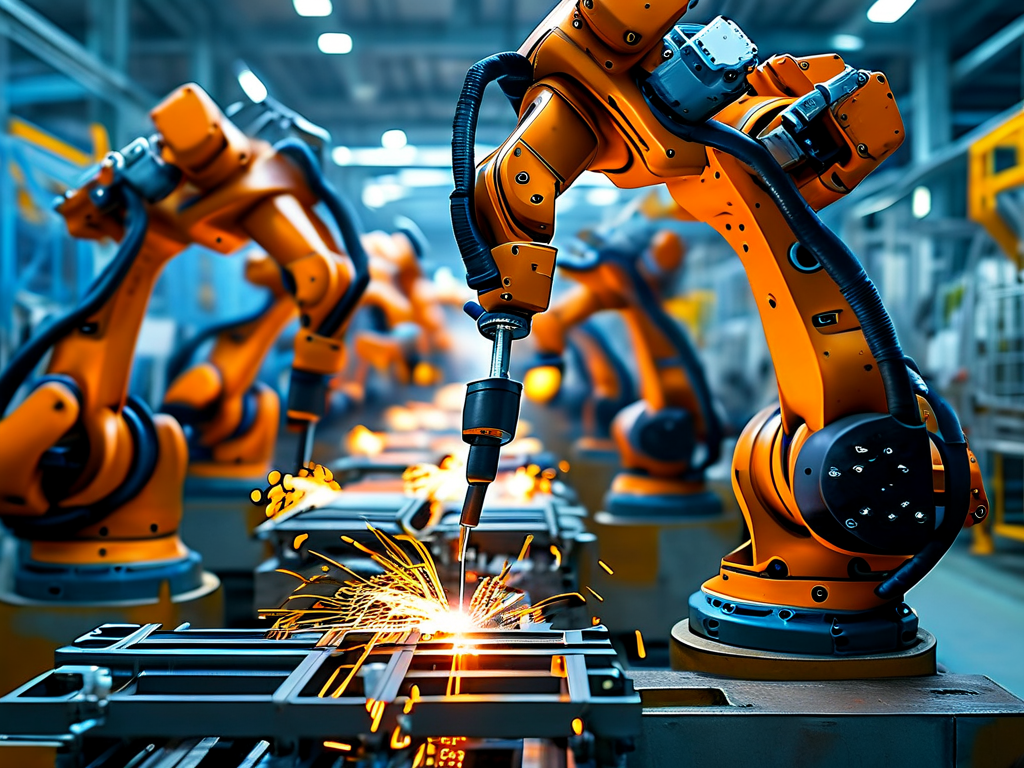The integration of industrial robotics technology into vocational education has revolutionized how specialized skills are cultivated for modern manufacturing sectors. As industries increasingly adopt automation, the demand for technicians proficient in robotics programming, maintenance, and system design has surged. This article explores the latest advancements in industrial robotics and their alignment with vocational training programs, highlighting practical applications and career opportunities.

The Evolution of Industrial Robotics in Vocational Training
Industrial robotics technology has transitioned from basic mechanical automation to sophisticated systems powered by artificial intelligence (AI) and machine learning. Vocational institutions now prioritize hands-on training with collaborative robots (cobots), programmable logic controllers (PLCs), and vision-guided systems. For instance, students at leading technical colleges engage in projects such as designing robotic assembly lines for automotive parts or troubleshooting sensor-based sorting mechanisms. These experiences bridge the gap between theoretical knowledge and real-world industrial challenges.
Curriculum Design for Robotics Specialization
Vocational programs tailored to industrial robotics emphasize a blend of software and hardware competencies. Core modules include:
- Robotic Programming: Teaching languages like Python and C++ for controlling robotic arms and automated workflows.
- System Integration: Training students to synchronize robotics with IoT-enabled devices and cloud-based platforms.
- Safety Protocols: Ensuring compliance with international standards such as ISO 10218 for human-robot collaboration.
A case study from the Guangdong Technical College reveals that graduates who completed a six-month robotics practicum achieved a 92% employment rate within three months of graduation, underscoring the efficacy of skill-centric curricula.
Industry Partnerships and Workforce Readiness
Collaborations between vocational schools and corporations like Fanuc and ABB have been pivotal. These partnerships provide access to cutting-edge equipment, such as 3D-printed end-effectors and AI-driven diagnostic tools. Additionally, apprenticeship programs enable students to work on live projects, such as optimizing packaging lines for food processing plants or calibrating welding robots for shipbuilding.
Mr. Chen, a robotics instructor at Shanghai Vocational Institute, notes, "Employers no longer seek just textbook knowledge; they value problem-solving agility. Our labs simulate factory environments, so students learn to adapt to variables like equipment malfunctions or production delays."
Emerging Trends and Future Prospects
The rise of smart factories and Industry 4.0 has expanded the scope of industrial robotics. Vocational training now incorporates trends like digital twins (virtual replicas of physical systems) and edge computing for real-time data processing. Furthermore, niche specializations, such as robotics maintenance for renewable energy systems or AI-driven quality control, are gaining traction.
According to a 2023 report by the International Federation of Robotics, over 70% of manufacturers plan to upskill their workforce in robotics by 2025, signaling robust job growth for vocational graduates.
Industrial robotics technology is not merely a tool for automation but a catalyst for empowering the next generation of technical professionals. Vocational programs that fuse innovation with practicality will remain essential in preparing students for dynamic industrial landscapes. As robotics continues to evolve, so too must the curricula and partnerships that drive vocational excellence.









